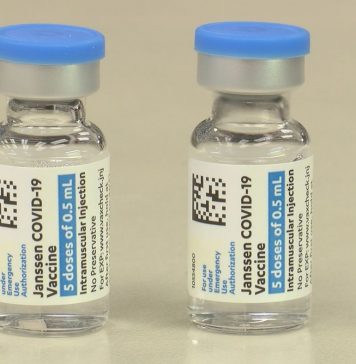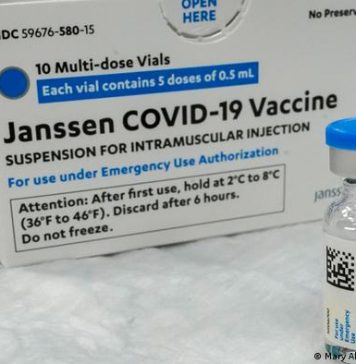High percentage of ex-NFL players had brain disease: report
Infant sleep safety still misunderstood by many caregivers
(Reuters Health) - Even though most caregivers agree on the importance of safe infant sleep practices, many of them may not know what to do – or not do – to prevent sleep-related deaths from sudden infant death syndrome (SIDS), a U.S. study suggests.
Researchers questioned caregivers of newborns at Staten Island University Hospital in New York City about sleep safety and found 53 percent of them disagreed with use of pacifiers – which are in fact linked to a lower risk of SIDS – and 62 percent believed in swaddling infants – which is tied to an increased SIDS risk.
It’s possible that new parents may have a hard time discarding advice from their own parents or grandparents even though recommendations about sleep safety have changed considerably from one generation to the next, lead study author Dr. Sarah Varghese said by email.
“There is a certain power surrounding 'traditional' knowledge,” said Varghese, now at Emory University and Children’s Healthcare of Atlanta. “Both parents and health care professionals need to stay up-to-date on recommendations.”
Nationwide, SIDS kills about four babies out of every 10,000 live births, down from about 130 in 10,000 in 1990, according to the Centers for Disease Control and Prevention.
Despite the dramatic decline in death from SIDS since 1992, when the American Academy of Pediatrics (AAP) announced that babies should be placed on their backs to sleep, SIDS in recent years has remained the third leading cause of infant mortality, the authors report in the Journal of Perinatology.
Almost four years ago, the AAP issued new infant sleep guidelines for prevention of SIDS and other sleep-related deaths; the guidelines encouraged breastfeeding, pacifier use, and firm crib mattresses, and cautioned against blankets and pillows and bed-sharing.
The study by Varghese and colleagues, while small, suggests that at least some parents may not have absorbed these most recent recommendations.
The researchers questioned 121 caregivers, including parents and grandparents, of newborns delivered in 2013, asking how strongly they agreed or disagreed with recommended infant sleep safety practice.
Most participants strongly agreed on the importance of using a safety approved crib, avoiding exposure to smoke and getting routine childhood vaccinations.
But most of them disagreed with guidance against swaddling and using home monitors, as well as recommended pacifier use.
Some caregivers may avoid pacifiers because they have concerns about dental issues, while others may worry that it could interfere with breastfeeding, the study authors note. The AAP recommends starting pacifier use when babies are about three or four weeks old, after they are successfully breastfeeding.
Swaddling with blankets or specially designed wraps can increase the risk of infant death, but some nurses still swaddle infants in the hospital and teach new parents how to do it themselves, the authors note. Some caregivers believe swaddling can soothe infants and make it easier for them to sleep.
Only 61 percent of participants recalled being taught about sleep safety by a health care provider.
The study was small, limited to English-speaking participants and included primarily white caregivers, which may limit how much the findings apply to a more diverse population, the researchers acknowledge.
Even so, the findings highlight the challenge of conveying safe sleep practices to parents who may be overwhelmed by too much advice, said Dr. Michael Goodstein, a neonatologist at York Hospital WellSpan Health in York, Pennsylvania and a member of the AAP task force on SIDS.
“Even if parents have been made aware of safe sleep information, there may be competing and conflicting information and advice available from multiple sources including books, magazines, family and friends, TV shows and the Internet, as well as many different health care providers,” Goodstein, who wasn’t involved in the study, said by email.
SOURCE: bit.ly/1iCOSar Journal of Perinatology, published online September 3, 2015.
Shake, shake, shake your NPH insulin pen before injecting
(Reuters Health) - A warning for people who use insulin pens: Not shaking your NPH insulin pen before injecting can result in wide variations in your insulin level and blood sugar control, researchers from Italy report.
NPH insulin comes as an insoluble mixture of crystals and liquid and must be resuspended before injection.
Researchers at Perugia University in Italy wanted to know what difference it would make if patients didn’t resuspend their NPH insulin by tipping the insulin pen 20 times before injection - and if they didn’t shake it by tipping it back and forth, whether it would matter how they held the needle during the injection.
As it turned out, everything mattered.
One of the researchers, Dr. Geremia B. Bolli, told Reuters Health he was surprised by “the high variability of effects on lowering of blood glucose depending as to whether the NPH pen is properly resuspended or not, and (if it’s not resuspended), even great differences depending on the position of the pen, i.e., horizontal, vertical with tip up or down.”
“The same NPH appears as a different insulin in each of these conditions,” Bolli said by email.
Compared with resuspending NPH insulin, not shaking the pen before injecting could result in lower insulin levels in the blood (if you inject with the needle flat or pointing up) or higher insulin levels (if you inject with the needle facing down).
Your body would also feel the effects of insulin earlier if you injected with the needle down without shaking it first or later if you injected it flat or needle up without shaking it first.
This could result in your blood sugar rising above desired levels sooner (needle flat or pointed up) or later (needle pointed down) when you don’t resuspend the NPH insulin by shaking the pen first.
The research team reported in the journal Diabetes Care that insulin levels could vary by as much as 23% and blood sugar control could vary by as much as 62% depending on whether NPH insulin is shaken before injecting, or not.
“For the users of NPH and also of the pre-mixed insulin (rapid+NPH) it is important to resuspend carefully prior to injection,” Dr. Bolli concluded. “This will reduce variability of NPH effects a lot.”
Dr. Satoru Yamada from Kitasato Institute Hospital, Tokyo, Japan, who was not involved in this study, told Reuters Health by email that the results show it's very difficult to have stable efficacy with NPH insulin.
Yamada advises doctors to select long-acting analogs rather than NPH itself.
Bolli agrees that it’s great if patients can afford the newer glargine and detemir forms of insulin, but he points out that for many patients, these alternatives are beyond their means. And for these patients, the message is clear: always resuspend your NPH insulin before injecting.
SOURCE: bit.ly/1iVKsv8 Diabetes Care, online September 10, 2015.
Racism linked to mortality for both blacks and whites in U.S.
(Reuters Health) - In U.S. communities with high levels of racial prejudice, both blacks and whites may have worse survival odds than people who live in more tolerant places, a study suggests.
Researchers examined U.S. survey data on racial attitudes from 1993 to 2002 and linked the responses to death records through 2008, to explore the impact of prejudice on mortality. Altogether they had data from almost 11,000 people living in 100 communities nationwide.
By 2008, 1,651 people died, accounting for about 15 percent of the participants.
Living in a community with higher levels of anti-black prejudice increased residents’ overall odds of death by 24 percent when mortality risk was assessed independent of individual and neighborhood socioeconomic factors and individually held racial attitudes, the study found.
“Racial prejudice compromises health for the community as a whole,” said lead study author Yeonjin Lee, a sociology researcher at the University of Pennsylvania.
The findings challenge a widespread belief that only victims of racial prejudice can be harmed by prejudice, Lee said by email. Instead, the study found prejudice was harmful for the health of both black and white participants.
“The current finding - that adverse effects of structural racism were not specific to blacks - show that structural discrimination not only damages the low-status group members but also majority group members who live in the same community,” Lee added.
Structural racism is when social systems, social forces, institutions, ideologies, and processes interact to create and maintain racial and ethnic inequities, according to John A. Powell writing in the open-access Berkeley Law Scholarship Repository (bit.ly/1gycM4T).
The survey questions that Lee and colleagues analyzed asked whether black people had worse jobs, income or housing due to less in-born ability to learn; and whether black people lacked motivation to get out of poverty.
Additional questions touched on both black and white individuals, asking if one race was more or less intelligent or lazy than the other and whether there should be laws against marriages between the two races.
One limitation of the study is its reliance on survey participants to honestly answer questions about race because some people may try to provide what they think are socially acceptable responses even if they are not truthful, the researchers acknowledge in the American Journal of Public Health.
Researchers also lacked data on some factors that can influence mortality, such as how people eat and whether they smoke or drink.
While the paper doesn’t prove prejudice causes premature death, it’s possible that residents of communities with less racial tension may have a greater ability to band together to advocate for policies and services that help foster a healthier neighborhood, the authors suggest.
Researchers call this social capital, and they found higher levels linked to a 17 percent reduction in community-level mortality. Social capital was lower in communities where racial prejudice was higher, the study found.
It’s also possible that communities with high levels of racial prejudice may create a hostile living environment that triggers certain stress responses in the body that can negatively impact health and mortality, said David Williams, a professor of public health and African-American studies at Harvard University in Boston.
Many little indignities – like being treated disrespectfully or with fear or mistrust – can create a hostile environment in a community and add up to enough stress to trigger a biological response to racial prejudice, said Williams, who wasn’t involved in the study.
Over time, heightened stress can lead to more abdominal fat, heart disease and the buildup of plaque in the coronary artery, all of which have the potential to hasten death.
“Little indignities can predict mortality,” Williams said. “Sometimes we think it takes a big event, but if you are exposed to a series of chronic ongoing little indignities it all adds up.”
SOURCE: bit.ly/1V0KDpY American Journal of Public Health, published online September 17, 2015.
House Republicans vote to strip Planned Parenthood funds
WASHINGTON House Republicans voted to deny funds to women's healthcare provider Planned Parenthood for a year on Friday but the action did little to quell party desires to use a spending bill as leverage in their fight to punish the group in an abortion controversy.
Congress adjourned for the weekend with an Oct. 1 government shutdown deadline fast approaching and no clear plan from Republican leaders for extending funding for federal agencies.
Many conservative Republicans had called for the stop-gap spending measure to deny funding to Planned Parenthood, but others in the party, aware of Democratic opposition, had said this would increase the likelihood of a second government shutdown in two years.
House Speaker John Boehner, trying to release some steam from his caucus, chose to delay consideration of a spending bill vote and put the stand-alone defunding bill to a vote, along with a separate measure aimed at banning abortions that involve live births.
Both measures passed easily, largely on party lines.
Planned Parenthood faces allegations, which it denies, of improperly selling fetal tissue from abortions. The non-profit group said Internet videos that have inflamed anti-abortion sentiment among Republicans "falsely" portray its participation in tissue donation programs for medical research.
Several House Republicans said the two bills passed on Friday would be blocked by Senate Democrats, and stronger action to stop Planned Parenthood funding may be necessary.
"I think you still need to continue to look at the funding mechanism as a potential vehicle to stop the murders," said Representative Bill Flores of Texas, who heads a group of 172 House conservatives.
During debate of the two bills, Democratic Representative Carolyn Maloney of New York said the legislation "attempts to criminalize legal medical care and punish women by rolling back reproductive choices."
Representative Richard Hudson of North Carolina said he was concerned that anti-Planned Parenthood policy provisions in the spending bill would prompt a shutdown without stopping the practices.
And Representative Roger Williams of Texas said, "There are "people like me who can’t find a way to vote for anything that funds Planned Parenthood."
The White House again called on Republicans to enter budget talks to ease automatic spending constraints, but said a short funding extension was still needed.
"I would not envision a long extension of funding at current levels, but rather enough time for Congress to finally convene the talks, reach an agreement and implement it," White House Spokesman Josh Earnest said.
(Additional reporting by Richard Cowan and Doina Chiacu)
California dairy recalls soft cheeses due to possible Listeria link
U.S. startups aim to help seniors ‘age in place’
NEW YORK Shari Cayle, 75, called "Miracle Mama" by her family ever since she beat back advanced colon cancer seven years ago, is still undergoing treatment and living alone.
"I don’t want my grandchildren to remember me as the sick one, I want to be the fun one," said Cayle, who is testing a device that passively monitors her activity. "My family knows what I’m doing and I don’t think they should have to change their life around to make sure I’m OK."
Onkol, a product inspired by Cayle that monitors her front door, reminds her to when to take her medication and can alert her family if she falls has allowed her to remain independent at home. Devised by her son Marc, it will hit the U.S. market next year.
As more American seniors plan to remain at home rather than enter a nursing facility, new startups and some well-known technology brands are connecting them to family and healthcare providers.
The noninvasive devices sit in the background as users go about their normal routine. Through Bluetooth technology they are able to gather information and send it to family or doctors when, for example, a sensor reads that a pill box was opened or a wireless medical device such as a glucose monitor is used.
According to PricewaterhouseCoopers' Health Research Institute, at-home options like these will disrupt roughly $64 billion of traditional U.S. provider revenue in the next 20 years.
Monitoring devices for the elderly started with products like privately-held Life Alert, which leapt into public awareness nearly 30 years ago with TV ads showing the elderly “Mrs. Fletcher” reaching for her Life Alert pendant and telling an operator, "I’ve fallen and I can’t get up!"
Now companies like Nortek Security & Control and small startups are taking that much further.
The challenge though is that older consumers may not be ready to use the technology and their medical, security and wellness needs may differ significantly. There are also safety and privacy risks.
“There’s a lot of potential, but a big gap between what seniors want and what the market can provide,” said Harry Wang, director of health and mobile product research at Parks Associates.
NURSE MOLLY
Milwaukee-based Onkol developed a rectangular hub, roughly the size of a tissue box, that passively monitors things like what their blood glucose reading is and when they open their refrigerator. There is also a wristband that can be pressed for help in an emergency.
"The advantage of it is that the person, the patient, doesn’t have to worry about hooking it up and doing stuff with the computer, their kids do that," said Cayle, whose son co-founded Onkol.
Sensely is another device used by providers like Kaiser Permanente, based in California, and the National Health Service in the United Kingdom. Since 2013, its virtual nurse Molly has connected patients with doctors from a mobile device. She asks how they are feeling and lets them know when it is time to take a health reading.
Another startup, San Francisco-based Lively began selling its product to consumers in 2012. Similarly, it collects information from sensors and connects to a smart watch that tracks customers’ footsteps, routine and can even call emergency services. Next year it will connect with medical devices, send data to physicians and enable video consultations that can replace some doctor's appointments.
Venture firms including Fenox Venture Capital, Maveron, Capital Midwest Fund and LaunchPad Digital Health have contributed millions of dollars to these startups.
Ideal Life, founded in 2002, which sells it own devices to providers, plans to release its own consumer version next year.
“The clinical community is more open than they’ve even been before in piloting and testing new technology,” said founder Jason Goldberg.
Just this summer, Nortek bought a personal emergency response system called Libris and a healthcare platform from Numera, a health technology company, for $12 million. At the same time, Nortek said some of its smart home customers like ADT Corp want to expand into health and wellness offerings. The goal is to offer software that connects with customers' current systems as well as medical, fitness, emergency and security devices.
“In the smart home and health space today you see a lot of single purpose solutions that don’t offer a full connectivity platform, like a smart watch or pressure sensor in a bed,” said Mike O'Neal, Nortek Security & Control president. “We’re creating that connectivity.”
A July study from AARP showed Americans 50 years and older want activity monitors like Fitbit and Jawbone to have more relevant sensors to monitor health conditions and 89 percent cited difficulties with set up.
"They (companies) have great technology, but when you can’t open the package or you can't find directions that's a problem," said Jody Holtzman, senior vice president of thought leadership at AARP.
Such products may help doctors keep up with a growing elderly population. Research firm Gartner estimates that in the next 40 years, one-third of the population in developed countries will be 65 years or older, thus making it impossible to keep everyone who needs care in the hospital.
(Reporting by Kylie Gumpert, Editing by Michele Gershberg and Diane Craft)














